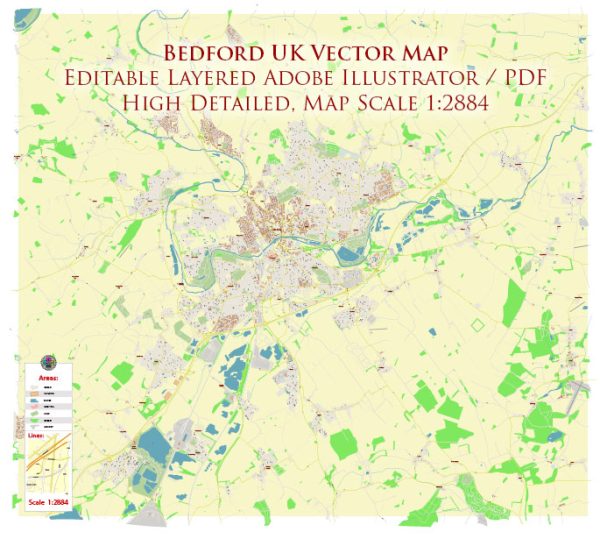Bedford is a historic town in the United Kingdom with a rich history that dates back many centuries. While the exact date of its creation is not well-documented, there are some key historical events and periods that have shaped the town’s development.
- Roman Era: Bedford’s history can be traced back to Roman times when it was known as “Beda’s ford,” referring to a ford in the River Great Ouse. It was an important crossing point on the road from London to the north of England. The Romans established a settlement in the area, and it played a role in their transportation and communication networks.
- Saxon and Medieval Periods: Bedford continued to develop during the Saxon and medieval periods. It is mentioned in the Domesday Book of 1086 as a market town and a center of trade. The town’s medieval heritage is evident in its historic architecture, including the medieval bridge over the River Great Ouse and St. Paul’s Church.
- Civil War: During the English Civil War in the 17th century, Bedford was the site of several skirmishes and played a role in the conflict.
- Industrial Revolution: In the 19th century, Bedford saw significant industrial growth, including the development of the brickmaking industry and the establishment of the Bedford Gas Company. The town’s economy diversified, and its population grew.
- Modern Era: In the 20th century, Bedford continued to evolve, with the growth of industries such as engineering, printing, and food processing. The town expanded with new housing developments and infrastructure projects.
Today, Bedford is known for its rich history, picturesque riverfront, and vibrant community. It is a market town with a mix of historic and modern features, and it continues to play a role in the economic and cultural life of the region. While the exact date of Bedford’s creation may be uncertain, its historical legacy is evident in its landmarks and the stories of the people who have called it home over the centuries.


 Author: Kirill Shrayber, Ph.D.
Author: Kirill Shrayber, Ph.D.